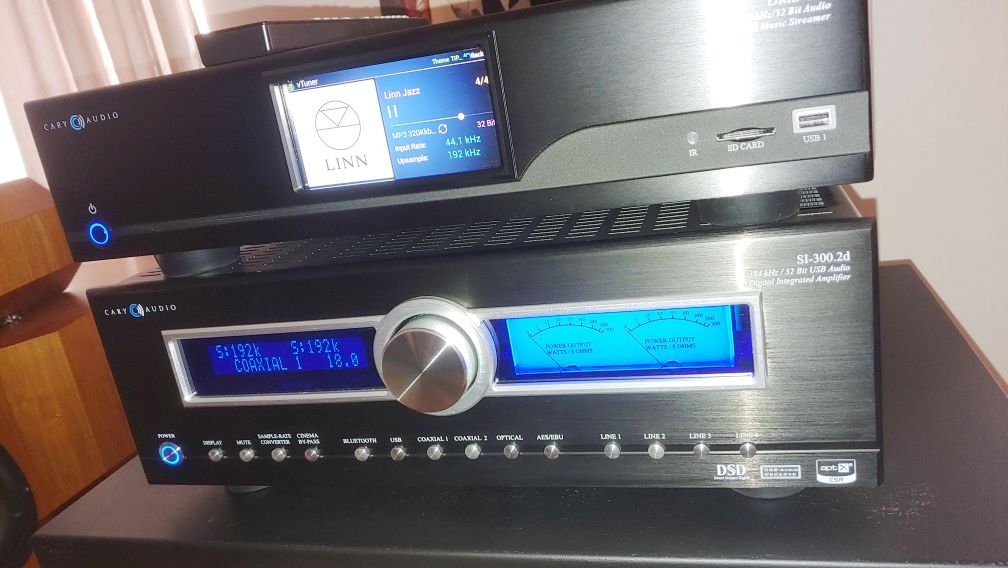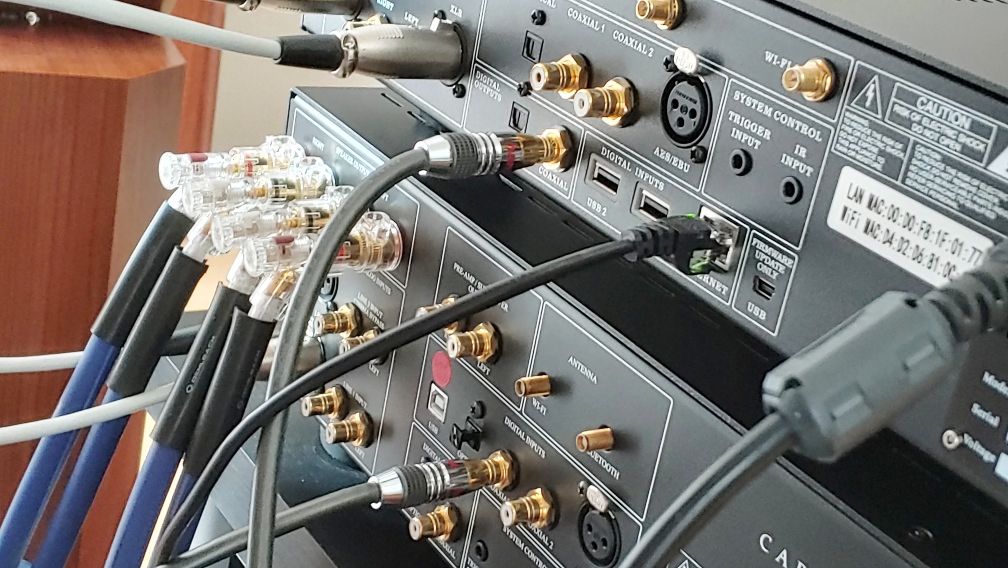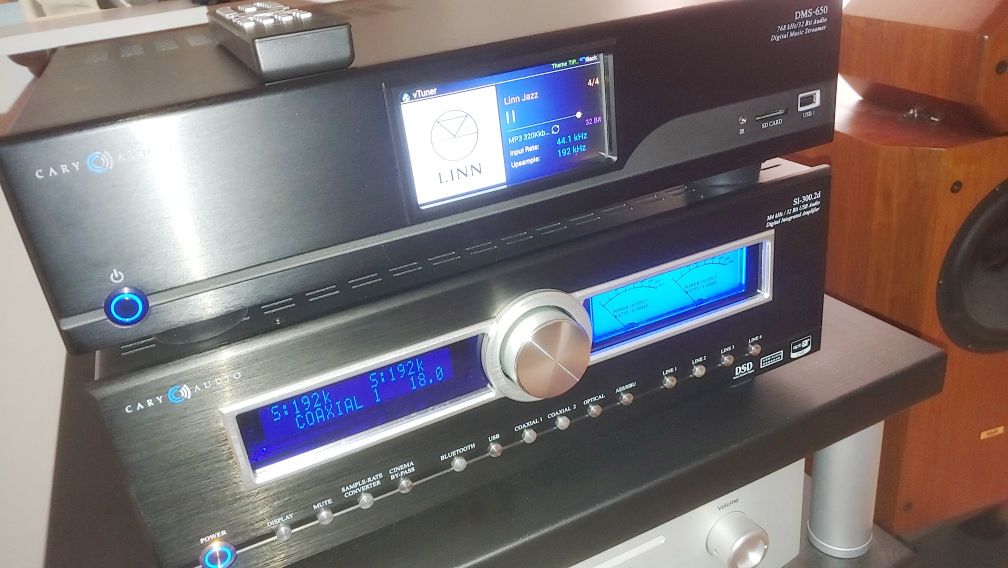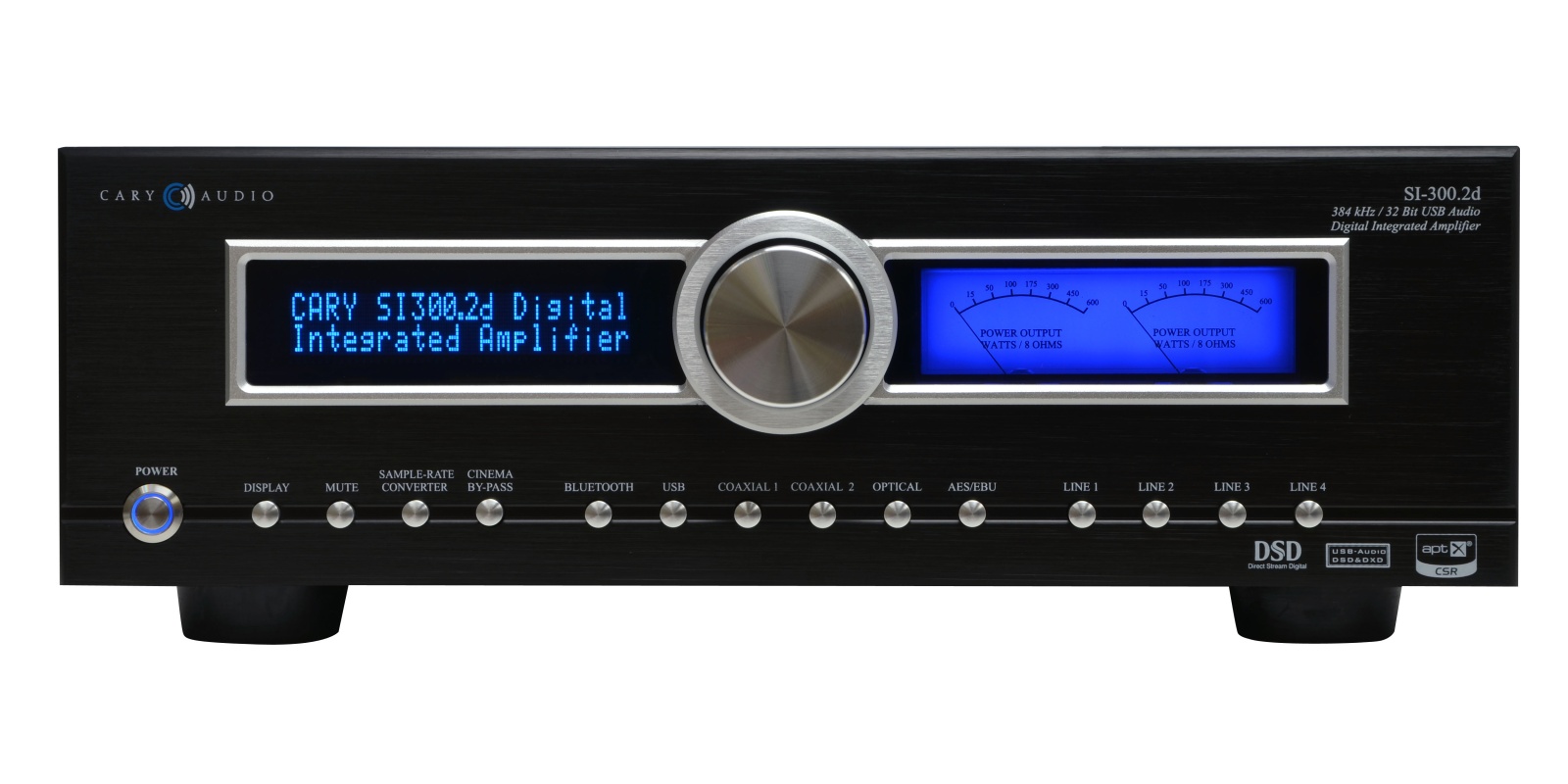Hi-Fi Voice is the largest online audio magazine in Czechia, founded in 2008. The original review by Jiří Petrák is in Czech language but for the sake of reaching a wider audience we translated it into English. Below is some key paragraphs and conclusions from this translation*. For tech specs and features see our product catalogue: SI-300.2d integrated amplifier.
I like Cary Audio. Sure, it’s a subjective affection that I’ve interpreted as “our shared warmth towards vacuum tubes”, but in this case that argument doesn’t apply, times change and we change with them. The component under review is pure solid state: the SI-300.2d integrated amplifier with digital inputs.
For a long time now, Cary Audio has been offering solid-state amplifiers with a valve character that is just as convincing and pleasing, and with performance that cannot be realistically achieved with vacuum tubes.
The SI-300.2d is a product of the modern age: it includes a full-featured and high-end DAC with multiple inputs and digital outputs, oversampling capability, Bluetooth and USB interfaces, and an (optional) iOS/Android control app.
At first glance
The amplifier is built based on time-proven industrial design with nice thick front panel made of polished aluminium and an “American-style” cover made of abundantly perforated sheet metal, the rear panel is densely populated with high-quality gold-plated connectors.
The MOSFET power devices are placed near the right side, which is clearly revealed by the large profile heatsink occupying a portion of the cabinet insides. Output speaker terminals are positioned as close as possible to the output transistors in the upper corner of the rear panel. Functionality above all else, you might say.

The front panel is dominated by dimmable blue display and VU-meters, with a large volume control knob in-between. Below is a row of buttons for selecting inputs, changing DAC oversampling mode, display dimming. There is also a mute button on the far left. The amp can be controlled from the front panel or a remote, but there is also a mobile app.
[…]On first listen
It sounds great. Gentle and musical, very similar in character to the valve (vacuum tube) monoblocks on which I compared the SI-300.2d, and on which I enjoyed the sublime sound of the great DMS-650 network player/streamer from the very first moment.
I didn’t feel the need to let the amplifier warm up, the character of the sound was more or less the same after switching it on as it was after a long period of use. It should be noted that at normal listening levels, the VU meter needles were at a few watts, close to zero; to get them moving (i.e. to get them close to 5 watts), I had to choose a volume that could not be beared for long in my listening room. After about 30 minutes of use, thermal equilibrium was reached; the unit was warm butit was still possible to keep my hand comfortably on a heat sink that was subjectively much warmer than the perforated cover.
Input switching is fast, including digital. The display briefly shows the name of the input in much larger letters after switching, which is a nice touch. Resampling or bypassing when switching inputs takes about 1-2 seconds, and the DAC itself resamples when the remote or front panel button is pressed in less than a second, which is user friendly. The amplifier’s menu allows you to select between two volume control modes: ‘custom’ that changes the volume of the currently active input only, leaving the others unchanged, or ‘regular’ which changes the volume at all inputs.
Since I mainly played music from the DMS-650 player/streamer, which has similar user configuration options for its DAC (the DMS can upconvert the digital signal to 768kHz max or DSD256 stream, the SI-300 can “only” sample up to 384kHz and also provides DSD256), I was able to compare the sonic performance of the DAC and the different sampling modes in the DMS, as well as the DAC in the SI-300, and of course the analogue output of the DMS in combination with the analogue line inputs of the SI-300.

So there are indeed many combinations; the differences in sampling are quite noticeable, and the typical Cary Audio user (or even a patient reviewer like me) can get quite worked up. Of course the main attraction is the music you listen to, which is the whole point of audiophilia, but I suspect that everyone, at least on first listening, would not mind going through all the sampling options, up to and including DSD stream, and settle on a preferred setting.
Personally, I liked the 192kHz or 384kHz sample with its well-balanced, sublime and friendly musicality, or the highest DSD256 setting which was honey-smooth and sweet, caressing not only the ears but also the head and sometimes the back of the head… quite an experience. The combination of listening to the DSD256 stream from the DMS-650’s analogue player output into the SI-300’s line input was fascinating, with the overall sound differing slightly from the previous combinations in a sort of wider, if slightly flatter (in the forward direction) presentation of space and a more striking liveliness to urgency; Overall, however, I preferred the sublimity and ethereal overtones in the music when the stream from the DMS was fed digitally into the amplifier, and only here was it converted to analogue in the DAC and amplified locally ‘in house’, so to speak.
[…]
True High-End
Smooth, delicate sound, full of detail and vibrancy that makes you actively follow the music, tapping your feet and sometimes clapping your hands. This is why I have a soft spot for Cary Audio. The musicality, the detail, the beautifully rich bass, the transparent and expressive mid-range with detailed highs, the vivid listening pleasure. The SI-300.2d delivers all this with ease.
Whether you’re immersed in quiet passages or loud rock events, the music flows as it should and simply entertains you as expected.
II was struck by the directness and lightness of the piano in “Topsy” (Dick Hyman, From the Age of Swing), with its beautifully full sound, dynamic keyboard swing and gradual reverberation, accompanied by subtle and clearly delineated cymbal swishes. The jazz club atmosphere was everywhere, with the rhythm of the song and the precise bass pulling you in and inviting you to dance. The beautifully recreated soundstage and instrument placement made you forget that there were speakers somewhere in front of you, you were simply drawn into the atmosphere and space of the recording.
Listening to similar jazz recordings via the analogue input, I noticed a slight subjective preference for the upper mids, so I took the signal out of the player digitally via the coax rather than the analogue output, preferring the DAC in the amp — and I settled on this configuration for my listening.
Paul McCartney’s vocals and backing guitars came through beautifully and unobtrusively on recordings such as “No Words” or “Let Me Roll It” [Paul McCartney & Wings, Band on the Run], without the slightest tendency for the vocals to wail and the guitars to whine, where other machines sometimes show a kind of midrange polish, but here it was all right, natural but personal to the point of being urgent and friendly, very nice.

As expected, the SI-300 sounded great from the LP record, with the valve phonostage plugged into the line input. My choice fell on an absolute classic: the first track of side 2, “Ooby Dooby” (Roy Orbison, The Original Sound, Wifon 1988). A proper rock’n roll barrage ensued, full of exuberant exuberance and electric guitars, with Orbison’s ubiquitous yet gentle voice, music that cannot be turned off, only listened to to the end. Songs that made even the blue VU-meters move.
[…]The days with the Cary Audio DMS-650 and SI-300.2d were very pleasant and went by faster than usual.[…]
To sum up, it’s a well-balanced combination of a fantastic Cary Audio DMS-650 player/streamer and a truly exhilarating Cary Audio SI-300.2d digital amplifier, beautiful vacuum tube-like sound delivered to speakers large and small. Great connectivity and configuration options and, most importantly, being a pleasure to listen to every time.

Disclaimer: the original Czech text was translated by DeepL AI online translator, then edited by a human.





